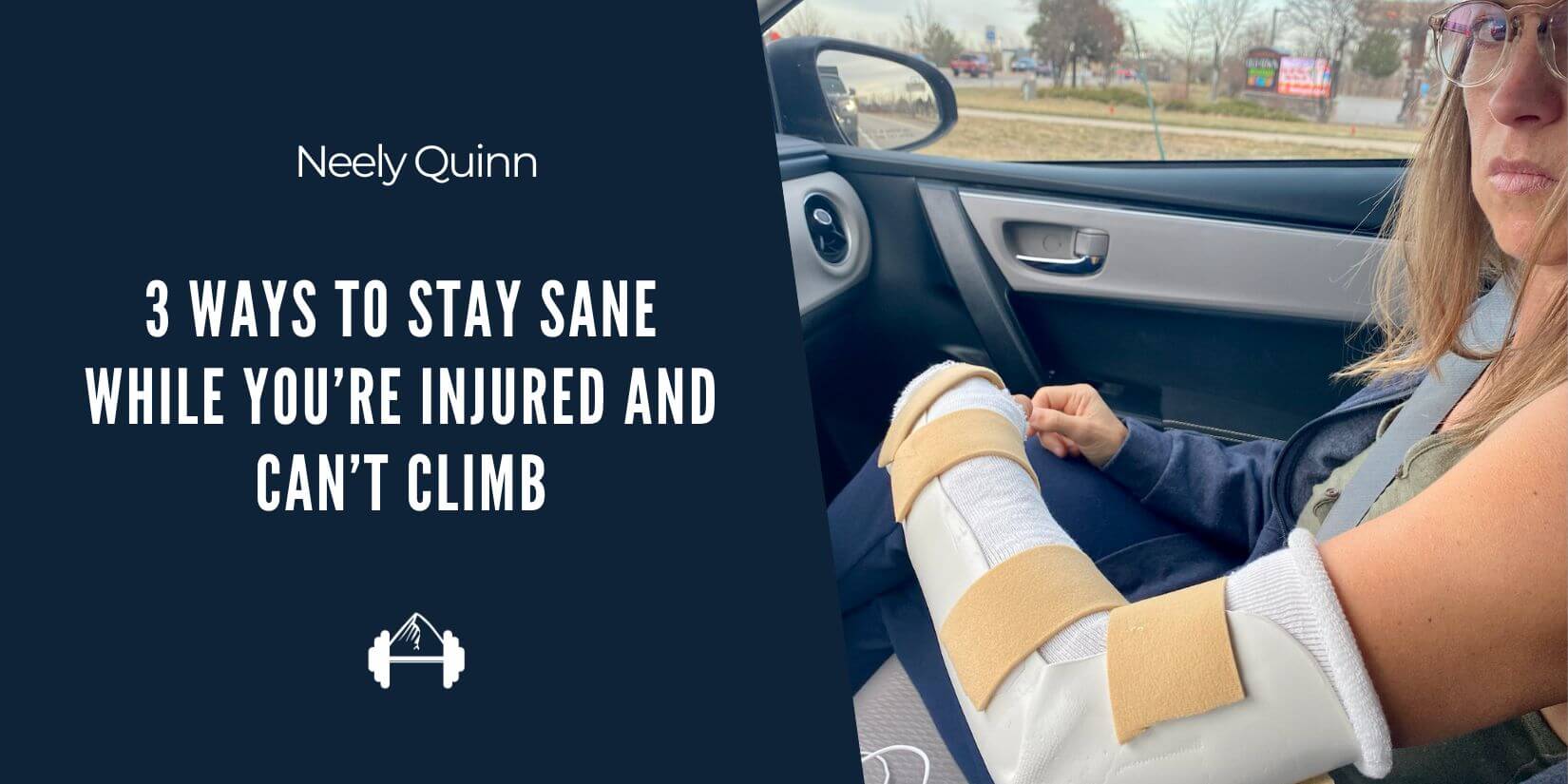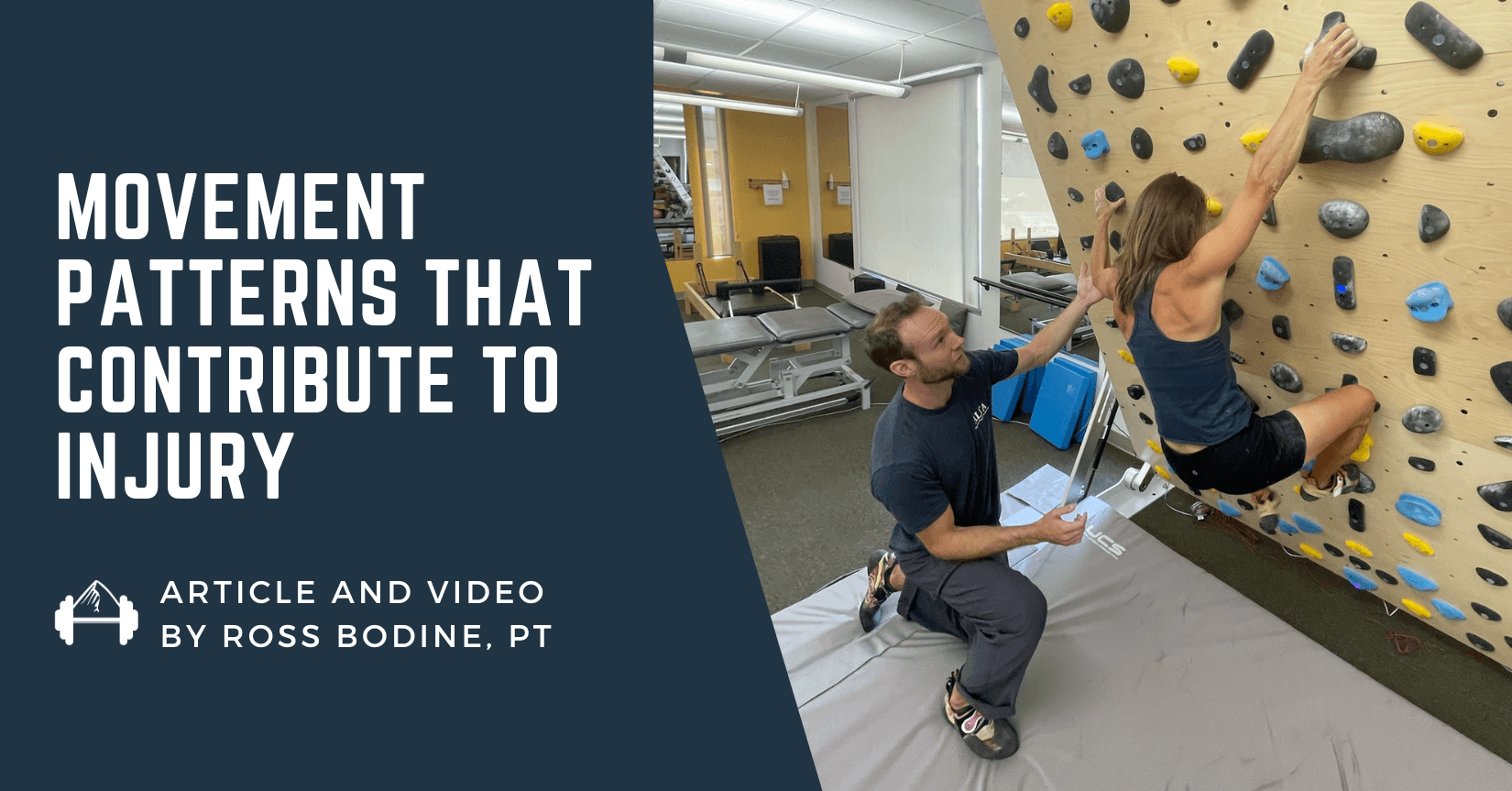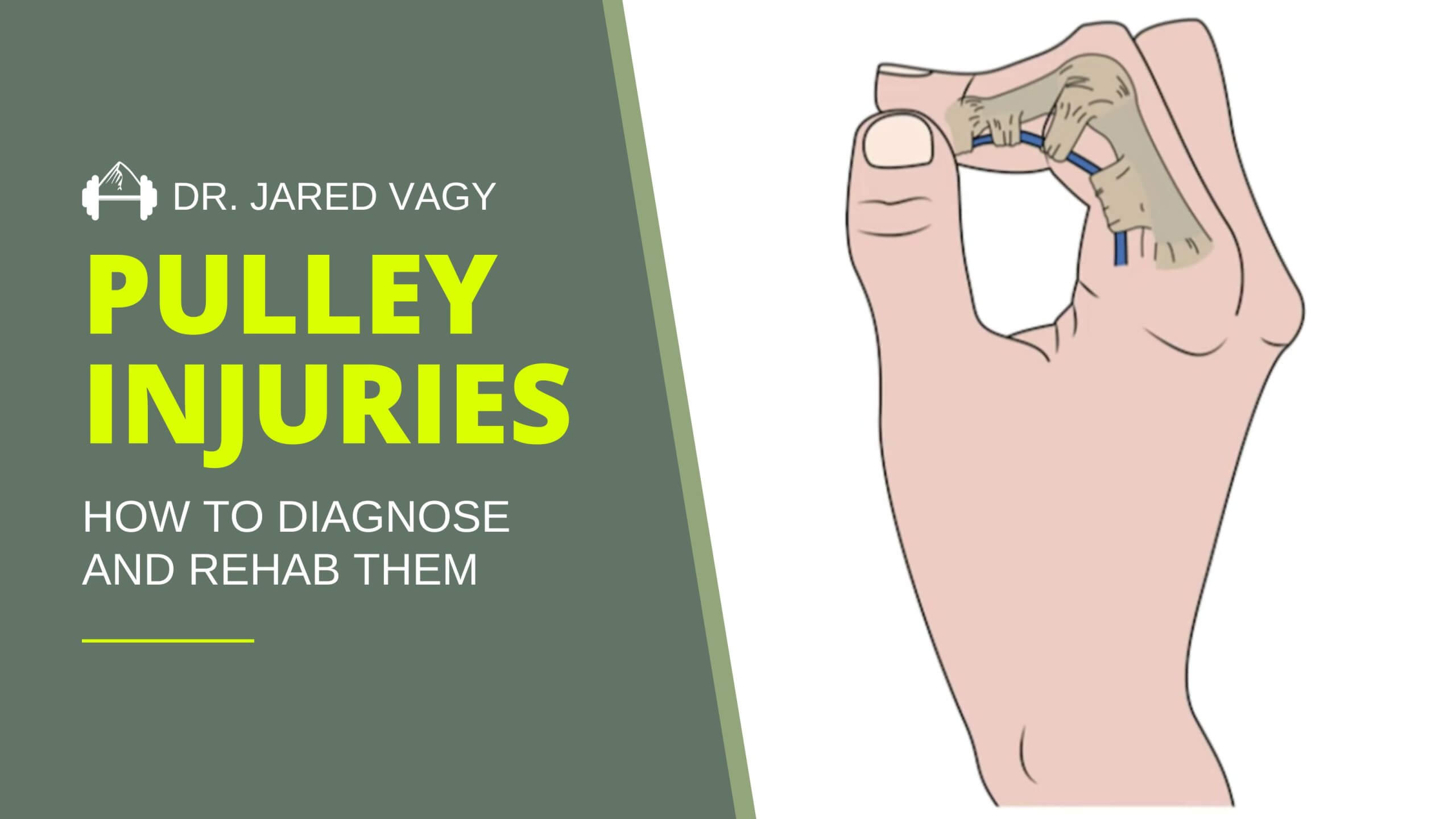Benefits of Strengthening the Posterior Chain in Climbers (+ Video)
By Dr. Evan Ingerson and Alex Stiger
This article is for the climbers who seem to go from one injury to the next… to the next. If you’ve spent days’ worth of time rolling your back on the foam roller and STILL are struggling to fight “climber posture” then please read on because the culprit might be the posterior chain.
The posterior chain is an extremely important system for climbers. It plays a crucial role in injury prevention and climbing performance by providing antagonist support to the anterior chain muscles that are often over-developed in climbers. When we climbers start having troubled spots in our overused areas, we are told we need to strengthen our antagonist muscles. But this general advice can be really confusing and choosing the right antagonist focused exercises is even more difficult.
And with anything related to strengthening, we are not going to see immediate results. So by adding the exercises you are about to learn from this article into our regular routine we can be ahead of the game, not only in recovering from common ailments but more importantly avoiding them altogether.
In this article trainer, Alex Stiger, and physical therapist, Evan Ingerson, will demonstrate the importance of the posterior chain, show you how to identify posterior chain weakness and how to best facilitate and strengthen these key muscle groups.
And please watch the video showing some of the best posterior chain exercises you can integrate into your training or injury prevention routine. Also, please note that we are about to get “science-y” and use some technical terms. You do not need to know all the minutia to be able to integrate these concepts.
What is the Posterior Chain?
The posterior chain is a series of muscles that share a common function of pulling the joints of your body into extension. These muscles are not only related by their proximity and function but are also neurologically linked to fire in unison. The key muscles of the posterior chain in the upper extremities are: infraspinatus and teres minor (of the rotator cuff), cervical and thoracic extensor muscles, all three portions of the trapezius, and even includes the finger and wrist extensors. The latissimus dorsi can also play a strong role in the posterior chain when the arms are down at your sides. In other words, these are the muscles on the back side of your body.
Rock climbing is a sport dominated by anterior chain movements. The anterior chain is the primary mover for the most common climbing movements such as high stepping, forward-facing lock offs, compression movements, toe-hooking, and maintaining body tension on overhangs.
What’s more is that climbers with under-developed posterior chains will increasingly rely on anterior chain strength to pull past difficult movements, leading to further muscle imbalances and increased risk of injury. Basically, the posterior chain is getting the short end of the stick while we are climbing. But having it be underdeveloped and weak can lead to a host of problems and slow the progression of climbing performance.
Posterior chain weakness of the shoulder, spine, and forearm can be linked to common climbing injuries such as shoulder impingement, rotator cuff strains, cervical and thoracic pain, biceps strains, shoulder instability, and even finger injuries and lateral epicondylalgia (elbow pain). (1, 2)
The Impact of Posterior Chain Weakness
Let’s zoom in to each body region to describe the impact that posterior chain weakness has on climbing injuries, starting at the shoulder.
The simple motions of reaching your arm overhead or performing a pull-up movement when climbing requires a significant amount of muscle coordination and strength. As the arm moves upward the humeral head glides slightly upward within the socket. The upward translation of the humeral head causes compression of the subacromial space, pinching on the supraspinatus muscle of the rotator cuff. This is normal and the subacromial structures are uniquely designed to be able to handle compressive forces.
However, if this upward translation is unopposed by shoulder external rotators the compressive force can become excessive, leading to a rotator cuff strain. In addition, external rotator muscle weakness can also lead to excessive anterior translation of the humeral head, leading to compressive biceps tendinopathy. Activation and strengthening of the shoulder external rotator muscles is an integral component of the treatment and prevention of these shoulder conditions (sources). This all means that a lot of common climber ailments can be addressed by strengthening the posterior chain muscles of the shoulder.
The scapula also assists in overhead arm movements. While the humeral head is rotating upward the scapula is also rotating and moving upward to maintain a stable base for the humerus to move on. Limited scapular upward rotation can be caused by a variety of impairments such as pectoralis minor muscle tightness, serratus anterior muscle weakness, and, most notably, upper and lower trapezius muscle weakness.
One study showed that climbers are more likely to have decreased scapular upward rotation compared to a non-climber population due to muscle tightness of the pectoralis minor and latissimus dorsi. (3)
Strengthening the posterior chain muscles of the scapula is another crucial element of the treatment for many climbing shoulder injuries.
Now let’s shift to the upper back and neck. Excessive thoracic kyphosis (forward bent position of the thoracic spine) and joint stiffness are often driven by extensor muscle inhibition and weakness. To improve thoracic joint mobility it is often more effective to focus on thoracic extension muscle strengthening rather than mobility exercises such as the rocking over a foam roller. For many types of neck and thoracic spine pain, posterior chain muscle strengthening is a crucial component of the rehab program.
How Strengthening the Posterior Chain Improves Performance
It is worth mentioning that not only does strengthening our posterior chain help prevent injuries or rehab current aches and pains but it is also a key component for performance progression. Our performance capabilities can be limited by weaknesses we don’t know we have and the posterior chain is high on the list of what can be overlooked. Whether it is a crux move you can’t seem to get or a plateau in your training cycle, the posterior chain might be the missing ingredient.
As mentioned earlier, the muscles of the posterior chain are neurologically linked. Physical therapists often use the technique of proprioceptive neuromuscular facilitation (PNF) to improve muscle activation and correct movement patterns. One principle of PNF is called “overflow”. Overflow is the facilitation of muscle recruitment of weaker muscles by using the contraction of stronger muscles in the same body region. This technique can be used to increase recruitment of entire chains of muscles. A simple example of this is to think of how much more effective your crimp strength becomes when you engage through your shoulders. Watch the video below for further explanation.
Using overflow, we can get more muscle activation and ultimately more muscle strengthening out of our exercises. When you focus on contraction of the entire posterior chain you will facilitate recruitment of the key muscles that tend to be weak or inhibited in climbers. Maintaining tension throughout the entire body is crucial to climbing performance. That is why it’s so important to use exercises that recruit entire muscle chains rather than targeting a single joint. Exercises like the ones you are about to learn save time and have better functional carry-over to climbing.
5 Exercises for the Posterior Chain
The video below shows 5 different exercises targeting crucial muscle groups for climbers while also facilitating recruitment of the entire posterior chain. The exercises go from easiest to hardest. My recommendation is to pick two or three of these exercises that you feel give you the best rotator cuff and scapular retractor recruitment and add those exercises to your weight room routine.
One last important note from Dr. Evan Ingerson. One of the most crucial training errors I see while working with climbers in the clinic is a lack of long-term follow through with injury prevention exercises. Strength training requires a MINIMUM of 6 weeks to begin to see significant gains, but the best benefits are seen with climbers who continue the exercises for 12 or even 16 weeks. So many athletes will be doing the right exercises, but quit too early and don’t reap the benefits.
My advice: pick a few, simple and impactful exercises (like the ones in the video) and stick with them for AT LEAST 8 weeks. Be consistent and the benefits will come!
Citations
- Santello G, Rossi DM, Martins J, Libardoni T de C, de Oliveira AS. Effects on shoulder pain and disability of teaching patients with shoulder pain a home-based exercise program: a randomized controlled trial. Clin Rehabil. 2020;34(10):1245-1255.
- 2. Bier JD, Scholten-Peeters WGM, Staal JB, et al. Clinical practice guideline for physical therapy assessment and treatment in patients with nonspecific neck pain. Phys Ther. 2018;98(3):162-171.
- Roseborrough A, Lebec M. Differences in static scapular position between rock climbers and a non-rock climber population. N Am J Sports Phys Ther. 2007;2(1):44-50.

Dr. Evan Ingerson
Evan is a Doctor of Physical Therapy and Board Certified in Orthopedics. He graduated with honors with his doctorate in physical therapy from Regis in 2016 and has been doing everything he can to continue to grow his clinical effectiveness ever since. When he’s not in the clinic Evan enjoys everything Colorado has to offer such as rock climbing, mountain biking, skiing, and ballroom dancing. Work with Evan at his practice Mend in Colorado.

Alex Stiger
Alex Stiger is a climbing coach for TrainingBeta and she is a dedicated climber who lives in Longmont, Colorado. She’s sent up to 5.13d and is an avid boulderer. She improved her own climbing very quickly using efficient training, and she is a Certified Personal Trainer, Sports Performance Coach, TRX certified, and she’s completed Stacy Sims’ Women Are Not Small Men course. Learn about her coaching services at www.trainingbeta.com/alex.






Hi Doc,
Trying this for the first time. The first thing I notice is how hard it is on my lower back while trying to stay on the wall. Is this normal? Am I doing something wrong or ? I have a 26″ ball btw.
Great article and video! I especially appreciated the idea and explication of “reps in reserve”… makes so much sense.
I have one question: How many sets of each exercise should I perform for each session?
Thanks!
Thanks for the question, Joe. Evidence supports performing 2-4 sets per session. I usually recommend 2-3 sets for boulderers and 3-4 sets for sport climbers.
Glad you enjoyed!